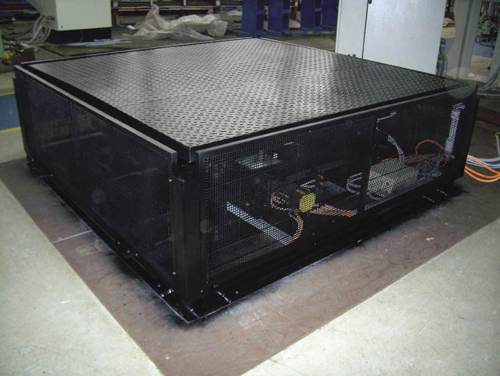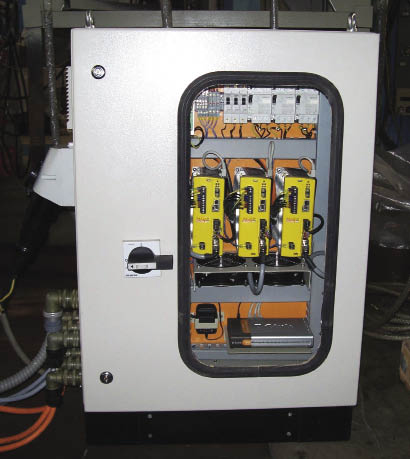Applied Research International (ARI) produces a range of simulators for marine and allied applications. Its products include a variety of offshore, quay-side, and gantry crane simulators for safe, cost-effective operational training for container movement and bulk handling operations. ARI’s simulators emulate the visual, behavioral, and operational characteristics of their real-world counterparts to create an immersive environment in which trainees can gain hands-on experience. A typical crane simulator is comprised of a modular PC-based control system, a replica operator cabin and seat, a high fidelity audio-visual system, and an instructor station equipped with closed caption TV for monitoring trainee movements.

The 3-axis crane simulator motion platform uses Baldor BSM servomotors.
When ARI decided to add an optional motion platform to its line of crane simulators, it worked with Electropneumatics & Hydraulics because it designs and builds special-purpose machinery including different levels of automation. Electropneumatics & Hydraulics chose to base the motion platform for the crane simulator on Baldor’s Powerlink- and Ethernet-compatible drives and servomotors. According to the company’s technical director, Ashley Rasquinha, “Baldor’s MicroFlex e100 AC servo drives are very cost-effective for this type of application, because they can be controlled via TCP/IP direct from the simulator’s host PC without the need for additional hardware.”
The three-axis motion platform provides X, Y, and Z movement of the replica operator cabin, synchronized to the computer-generated images being presented to trainees. Since it is designed to accurately emulate the movement of a real-life gantry crane, the platform’s drive axes are only required to handle relatively simple motion control tasks such as point-to-point moves and homing sequences, and do not require interpolation. As a result, the MicroFlex e100 servo drives can be used in their basic Ethernet mode without the additional complexity of real-time control.
Each axis is driven by a Baldor BSM 3-phase servomotor equipped with an incremental encoder for position and velocity feedback controlled by a dedicated MicroFlex e100 servo drive. All three drives are housed in a separate floor-standing control cabinet and are connected via a D-Link 10/100 Mbps Ethernet switch to the simulator’s host PC.

A view inside the simulator’s control cabinet shows the three Baldor MicroFlex e100 servo drives.
Rasquinha says that Baldor’s ActiveX development tools for its Mint motion control language helped to minimize programming effort. “The tools hide the complexity of Ethernet messages and have a simple interface to all the Mint programming commands and functions. In addition, the robust libraries of routines that Baldor provides made it easy for us to create and validate all the motion control sequences. During the development of the motion platform, we also received support from Baldor Electric India.”
Today, a three-axis motion platform based on Baldor Electric Company’s Ethernet-compatible drives is helping increase the realism of crane training by physically moving a simulator system’s replica operator cabin in synchronism with computer-generated images.
Applied Research International
arisimulation.com
Baldor Electric Company
baldor.com
Electropneumatics & Hydraulics
electropneumatics.com
::Design World::
Filed Under: Hydraulic equipment + components, Pneumatic equipment + components, FLUID POWER, Motion control • motor controls, Motors • servo





Tell Us What You Think!